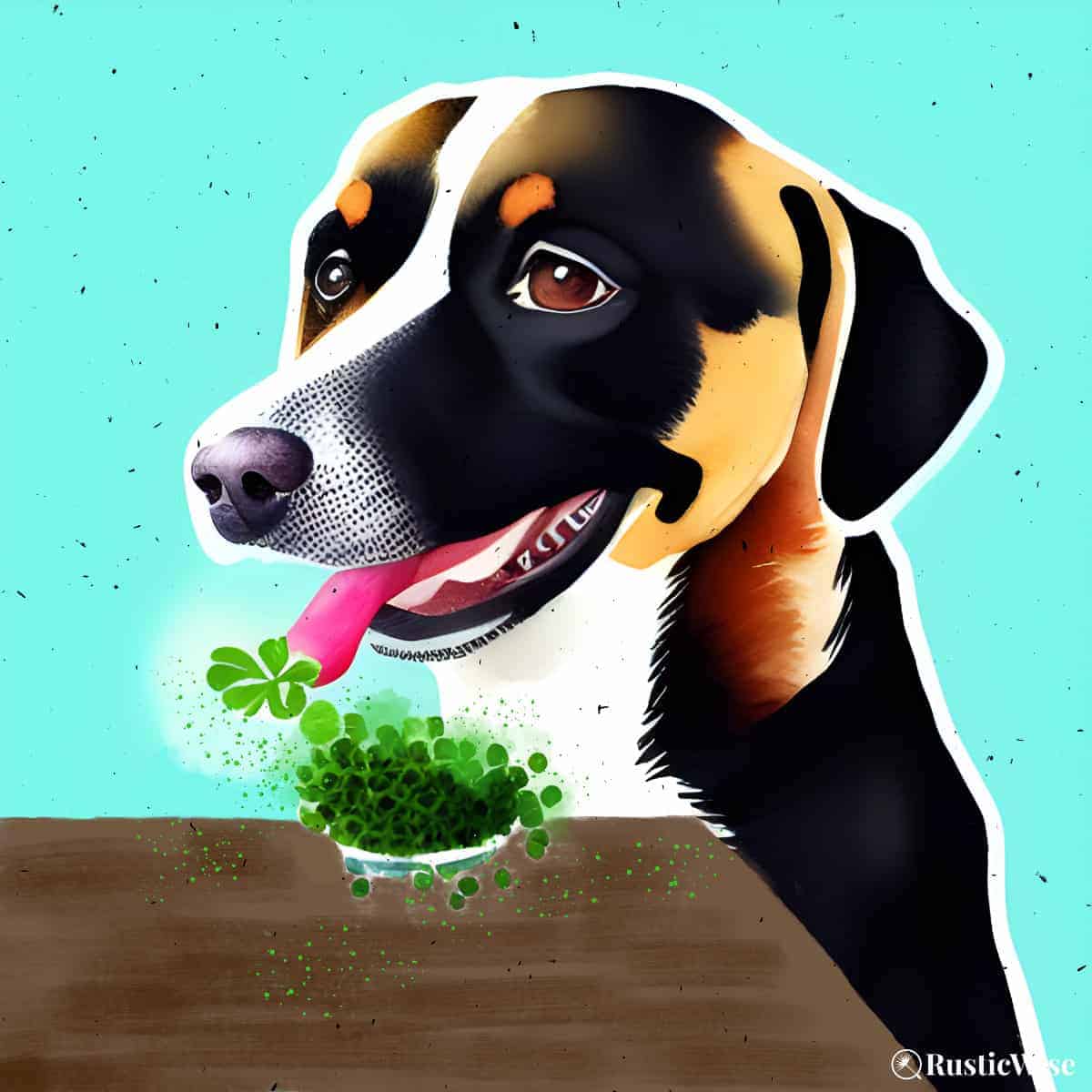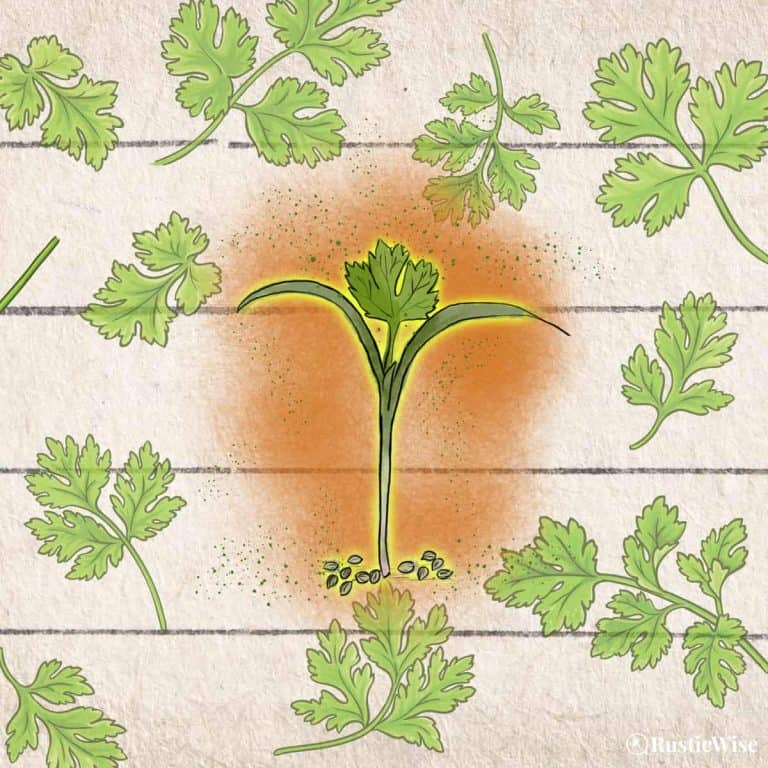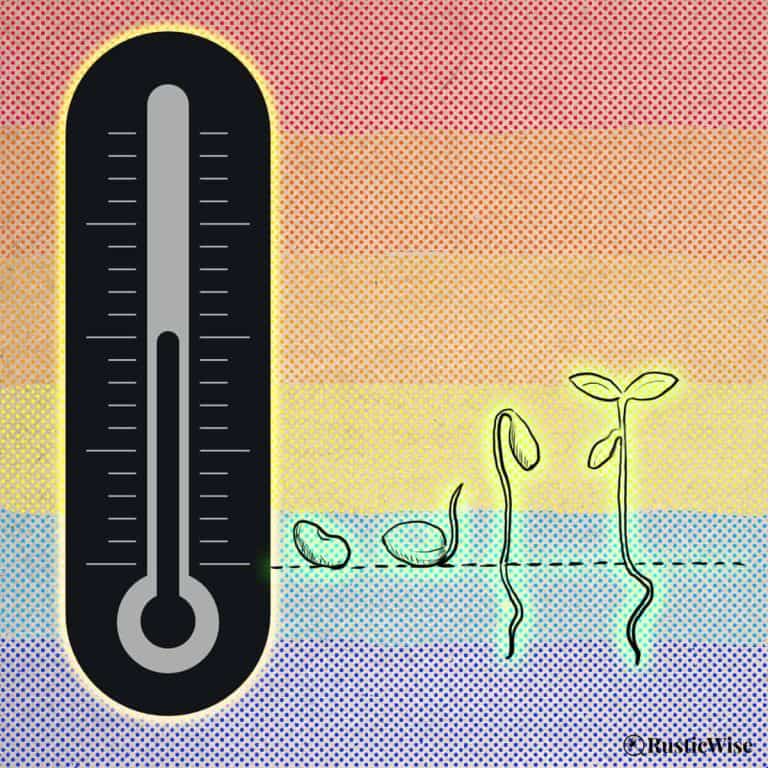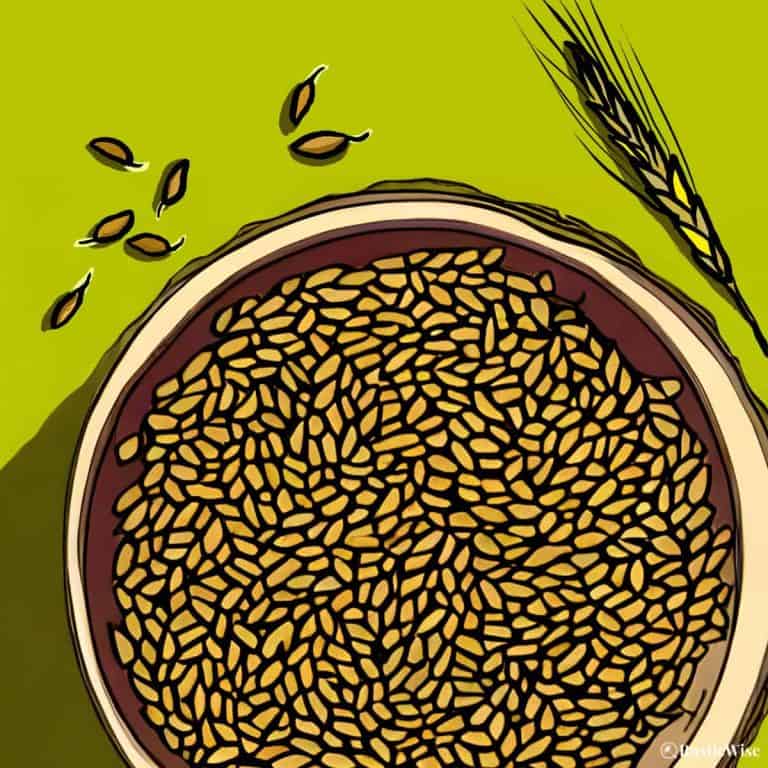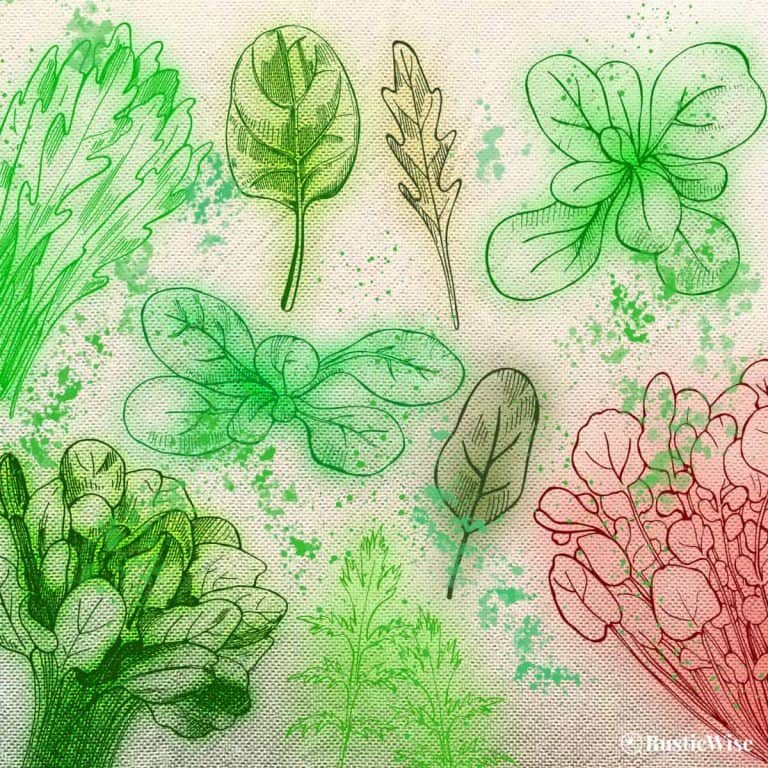Can Dogs Eat Microgreens? Here Are 12 Toxic Types To Avoid
Dogs have a reputation for eating anything (even plants and foods that are off-limits!). And while that might be true, there are some plants and foods that can be toxic to them. We all know to avoid feeding dogs certain foods such as chocolate or raisins. Other foods fall under a grey area.
If you’re wondering, can dogs eat microgreens, the answer is yes, most microgreens are generally safe to eat. However, there are a few toxic varieties to avoid such as those belonging to the nightshade family (tomatoes, peppers, potatoes, etc.) and alliums (onions and garlic).
Microgreens are packed with vitamins and minerals that can be a nutritious addition to a balanced diet for dogs. Before you start feeding your dog microgreens, it is important to know which ones to avoid. Let’s look at a 12 types of microgreens that can be toxic to dogs.
What exactly are microgreens?
Microgreens are tiny seedlings grown from a variety of vegetable, herb, and legume seeds. They are harvested shortly after the time of germination, when only an inch or two tall.
Let’s not confuse microgreens with sprouts, two terms that are used to refer to young plants, but have key differences. Sprouts are grown in near-dark conditions and high humidity without soil. The entire plant is eaten: root, shoot, and seed.
Microgreens require sunlight and are anchored in a growing medium such as soil or coconut coir. They are harvested above the soil line.
And, in case you’re wondering, yes, dogs can eat sprouts, too! However, for this article, we’re just focusing on microgreens for dogs.
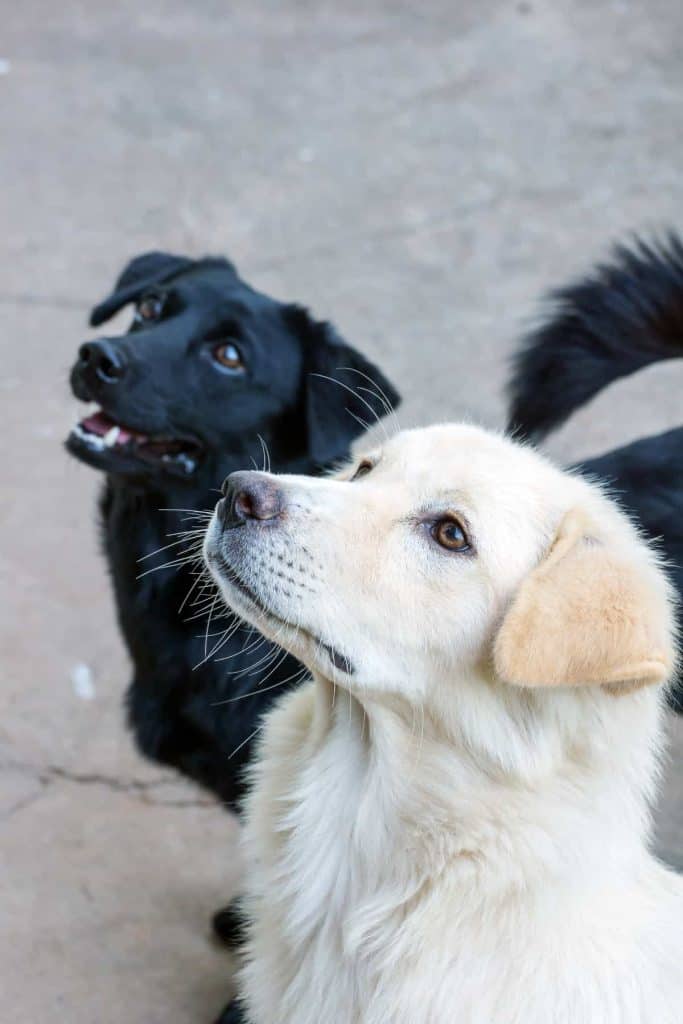
Reasons to feed your dog microgreens
There’s a lot of buzz about microgreens. So why should you feed them to your dog? Microgreens are young, immature greens. Some examples of microgreens that you can grow at home include kale, broccoli, and wheatgrass.
Even if you’re feeding your furry friend high-quality pet food enriched with vitamins, they could still be missing out on some nutrients. There are many health benefits of microgreens.
Here are a few reasons you may want to feed microgreens to your dog:
- Packed with nutrients: These tiny but mighty greens have a higher concentration of nutrients than most regular green vegetables. Because they’re harvested at an early growth stage, microgreens are rich in antioxidants, phytochemicals, vitamins and minerals. A much cited 2012 study examined 25 types of microgreens. Researchers found that micros can contain between 4 and 40 times the amount of vitamins and minerals than the leaves of the same mature plant.¹ Your canine companion may receive vital vitamins and minerals they might not otherwise get from meat.
- Easy to digest: Because of their small size, microgreens are more easily digested than full grown leafy vegetables. They contain lower levels of starches than mature vegetables. Many types of microgreens are a rich source of dietary fiber which aids in healthy digestion.
- Adds variety: Your pet doesn’t want to eat the same boring kibble or canned dog food, day in and day out. Microgreens are a great way to supplement your pet’s diet and are very easy to prepare. They are often mixed in with other greens or pet food to create a nutrient-dense, healthy meal for your dog.
Microgreens are not just packed with nutrients, but they also taste great! You can add microgreens to your own meals to boost your antioxidant intake or even prepare a meal for you and your dog.
Can dogs eat microgreens, really?
Yes, the vast majority of microgreens are safe to eat raw for dogs and cats.
Tip: A good guideline is that if the fully grown version of a plant is unsafe to eat for dogs, it’s also wise to stay away from the microgreen version as it shares many of the same properties and compounds.
It’s important to note that fresh microgreens should be used as a small part of a dog’s daily diet. According to the Merck Veterinary Manual, the six types of nutrients required for a healthy diet are:²
- Water
- Protein
- Fat
- Carbohydrates
- Vitamins
- Minerals
Microgreens are an excellent source of vitamins and minerals. Some are also great sources of plant-based protein.
There are so many ways to improve your dog’s health, and one of the best ways to do this is by improving the diet! Microgreens are a fresh, leafy green plant that you can add to your dog’s food to give him or her more antioxidant protection and more nutritious food.
There is no single microgreen that is best for every dog all the time, so talk to your vet about specific varieties that may be right for your dog’s situation.

12 Types of toxic microgreens for dogs
There are several microgreens that are actually considered dangerous for canines (and humans).
As mentioned earlier, if a fully grown plant is not safe for dogs to eat, it’s also best to avoid eating the microgreen.
Be sure to AVOID the following types of micros for your furry friends as they can be toxic, according to the American Society for the Prevention of Cruelty to Animals (ASPCA).³
- Buckwheat (Fagopyrum spp.): Buckwheat microgreens contains fagopyrin, a compound which can cause light sensitivity (aka phototoxicity) in animals like cattle and dogs, and people too. (Buckwheat micros are safe for people to eat in small amounts, but avoid feeding to your pets to play it safe.)
- Chives (Allium schoenoprasum): A member of the Allium family which should be avoided altogether.
- Garlic (Allium sativum): Another member of the Allium family. According to the American Kennel Club (AKC), garlic is five times more toxic to canines than other members of the allium family!⁴ This potent allium may cause anemia with symptoms that include overall weakness, collapsing, quickened heartbeat, and paler gums.
- Leek (Allium ampeloprasum): Once again, another allium to stay away from.
- Macadamia nuts (Macadamia integrifolia): Avoid sprouting or growing anything from the macadamia plant for your cats and dogs. According to the Merck Veterinary Manual, these nuts can cause “weakness, depression, vomiting, ataxia, muscle tremors, hyperthermia, and tachycardia.”² As little as six macadamia nuts can be poisonous to dogs, so it goes without saying to avoid growing this plant.
- Onion (Allium cepa): This bulbous allium should be avoided at all costs. Many dogs that consume onions and garlic may experience delayed symptoms. Ensure you monitor your pet for illness for several days after consumption.⁴
- Oregano (Origanum vulgare hirtum): This is a common herb to grow as a microgreen, so it’s unfortunate that the ASPCA lists it as toxic to dogs.
- Parsley (Petroselinum crispum): Another popular and tasty microgreen herb that can be toxic to dogs.
- Sweet pea or everlasting pea (Lathyrus latifolius or Lathyrus odoratus): Not to be confused with regular garden peas (Pisum sativum), sweet peas are ornamental flowering plants that should never be grown as microgreens (for humans and pets alike) as they are toxic. Pea shoots grown from garden peas however, are safe to eat for humans. Dogs can also eat garden pea shoots in moderation.
- Sorrel (Rumex scutatus): Also known as common sorrel, garden sorrel, French sorrel, spinach dock, this is a popular culinary herb that belongs to the buckwheat family and may be toxic to dogs.
- Tomato plant (Lycopersicon spp): Tomatoes belong to the nightshade family (which also includes peppers, potatoes, eggplant, and goji berries). The entire nightshade family should NOT be grown as microgreens as they contain solanine, a compound which is toxic for both people and pets.
- Watercress (Nasturtium officinale): Sometimes referred to as nasturtium, this plant belongs to the Brassica family and can be toxic to dogs.
Tips for adding microgreens to pet food
So, you have a tray of microgreens for your dog. What next?
When introducing a new food to your pooch, try a small portion of microgreens at a time. Not only does slowly introducing a new green to your dog allow him to grow accustomed to it, you’ll also end up wasting less if he doesn’t take to it. Plus, you can monitor your pet for any signs of potential illness.
There are several ways to add microgreens to pet food:
- To add microgreens to a pet’s diet, simply scatter the greens over their existing dry or wet food. Most micros are small enough to be bite-sized without any chopping.
- For larger microgreens such as sunflower, you might want to chop them up slightly and mix to incorporate.
Remember to refrigerate any unused microgreens. Most types of micros will last around a week in the fridge with proper storage. If you’re growing your own micros, it’s best to harvest and rinse, just before serving.
How to grow microgreens for pets
Growing your own microgreens to enjoy for both yourself and your dog is a much more cost-effective way to consume these greens than buying them.
To grow microgreens at home, you’ll need a few supplies:
- Quality seeds: Use only untreated seeds that have not been sprayed with fungicides or pesticides. Stick with organic varieties that are labelled high-germinating.
- Shallow grow trays: You should have one with drainage holes and one without. The one with drainage holes will be your growing tray, the one without will be the bottom tray to catch excess water.
- Cover: This is to block out light during the germination phase, and to retain moisture. You can also use newspaper or a porous cloth if you don’t have a cover.
- Misting bottle with clean water
- Quality potting soil
- Soak (if needed): Some seeds work better when presoaked. Check your seed packet for instructions.
- Measure seeds: The amount of seeds you’ll need depends on the size of your grow tray and the size of the seeds. Generally, you want to spread a thin layer across the surface of the soil. To estimate the amount of seeds you’ll need, spread a thin layer of seeds across the bottom of your grow container; gather the seeds in a cup.
- Prepare the growing tray: Fill with 1–2 inches (2.5–5 centimeters) of potting soil. Lightly press down on soil to compress. Mist the soil thoroughly with water. Ensure the soil is moist like a damp sponge, but not overly wet.
- Sow seeds: Broadcast the seeds evenly across the top of the soil. Seeds should not be overlapping, but can be touching slightly. Gently ensure all seeds are making good contact with soil. Gently mist the tops of the seeds with water.
- Cover and keep warm: During this blackout phase, the seeds don’t require any light while they’re busy germinating. Place the cover (or newspaper/cloth) on and place somewhere out of direct sunlight at room temperature.
- Uncover and bring into the light: After several days, the greens will have developed shoots. The germination rate varies depending on the type of seed, and temperature. Once they show healthy growth, bring them into the light such as on a sunny windowsill or under artificial grow lights.
- Water regularly: Once exposed to light, the shoots will turn green and will require regular watering. Try bottom watering the greens for good results.
- Harvest: Once the seed leaves (cotyledons, or first set of leaves) are fully developed, it’s harvest time! Some prefer to wait longer until the true leaf stage. Use a pair of sharp scissors or a knife to snip above the soil line. Rinse before eating. Store any unused micros in the fridge unwashed (they store better if dry).
Here are some of the best microgreens to include in your dog’s diet:
- Broccoli microgreens
- Cabbage microgreens
- Clover microgreens
- Kale microgreens
- Lettuce varieties microgreens
- Sunflower microgreens (use black oil sunflower seed)
- Wheatgrass microgreens (rich source of fiber)
Want to learn more about sprouting or growing micros for pets? Check out Sprouting Seeds for Birds, and Growing Microgreens for Chickens. 🐔🐦
👉 If you like this post, see our Complete Guide to Growing Microgreens at Home. 🌱
Would you like more timeless tips via email?
Fun tips to help you live an independent, self-sustaining lifestyle. Opt-out at any time.


References
- Lester, Gene & Xiao, Zhenlei & Luo, Yaguang & Wang, Qin. (2013). Microgreens: Assessment of Nutrient Concentrations. Journal of Agricultural and Food Chemistry. https://dx.doi.org/10.1021/jf300459b
- Merck Veterinary Manual, Nutritional Requirements and Related Diseases of Small Animals, https://www.merckvetmanual.com/management-and-nutrition/nutrition-small-animals/nutritional-requirements-of-small-animals. Accessed January 2023.
- American Society for the Prevention of Cruelty to Animals (ASPCA), Toxic and Non-Toxic Plant List – Dogs, https://www.aspca.org/pet-care/animal-poison-control/dogs-plant-list. Accessed January 2023.
- American Kennel Club (AKC), People Foods Dogs Can and Can’t Eat, https://www.akc.org/expert-advice/nutrition/human-foods-dogs-can-and-cant-eat/. Accessed January 2023.

Author: Theresa Tesolin
Theresa is co-founder of RusticWise. She helps people unleash their inner DIY spirit by encouraging them to get dirty and make or grow something from scratch.

